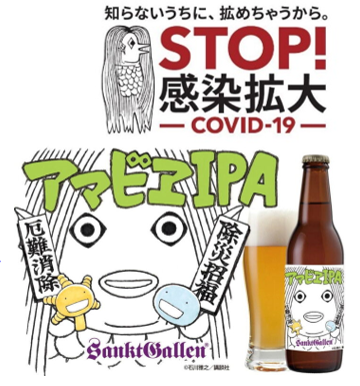Distinctive Celebrities during the Pandemic

Chan Ho Ying
Since the outbreak of the COVID-19 pandemic, government of various countries have made their plans to conduct pandemic mitigation propaganda. Therefore, numerous anti-coronavirus mascots have emerged and become special official spokespersons. Why were the mascots created? What if they were mistakenly adopted? Let us observe the following cases.

If you discover from social platforms that a cute dog is teaching you anti-coronavirus knowledge and policies, you will probably be fascinated. In February 2020, the Ministry of Health and Welfare in Taiwan introduced “Zongchai”, which was the “spokesdog” of the department announcing the educational information about COVID-19. When Zongchai made its first appearance in a Facebook post, the post recorded over 15,000 likes and 1,200 shares[1]. Why did Zongchai go viral? The key is its cuddly and eye-catching image. In contrast to the seriousness of government officials, mascots have a friendly image. They are more impactful to the public since the audience are motivated to process the messages they share [2]. Therefore, education becomes more effective.

Apart from recognizable images, mascots are ageless. They can interact with different age groups effortlessly. In Japan, citizens can invite the anti-coronavirus cat “Koronon” to educate children in schools and adults [3]. “Amabie”, a monster from Japanese folklore was adapted as a mascot to combat the pandemic, made appearance in a wide range of categories such as art, fashion, and food [4]. We can see that mascots can exist everywhere, interact with many people and penetrate deep into their minds. A likable mascot even facilitates a closer relationship between citizens and the government. Therefore, the audience are more likely to change their behaviors. It is presumably the reason why the Ministry of Health, Labour and Welfare follows the craze to use Amabie for anti-coronavirus promotion.

How about the misuse of mascots? In Brazil, the government used “Zé Gotinha” as the anti-coronavirus mascot. However, the mascot has not shown up since early 2021 because of its mismatch with the audience [5]. The purpose of Zé Gotinha was to relieve children’s anxiety towards vaccines, but the target audience of the national vaccination program is the public, especially the elderlies that were given priority to receive it. People feel disconnected from the mascot. Without making good use of emotional appeal , the mascot loses its significance though it has a long history. Thus, misuse of mascots can bring adverse effects.
The pandemic has greatly changed lives by moving communication and activities online. Under information explosion, simple pictures that convey plentiful messages stand out. For governments, a mascot is an optimal choice to maintain public awareness and provide education. Besides, it is easy to be viral on social media, like “Anyone” of the Fire Services Department in Hong Kong. A well-established mascot even improves the image of a government, builds citizens’ emotional connection with it, and enhances their engagement. These will benefit the sustainability of policies and communication.
References
[1] The Ministry of Health and Welfare (2020, February 7). A Facebook post about Zongchai. Retrieved from https://www.facebook.com/mohw.gov.tw/photos/1474091039423976
[2] Radomskaya, V., & Pearce, P. L. (2021). Adding character: The role of destination mascots in tourism development. Tourism Management, 84, 104248. https://doi.org/10.1016/j.tourman.2020.104248
[3] Hoeller, S. (2020, November 18). Japan has an adorable new anti-coronavirus cat mascot that’s handing out free masks around Tokyo and reminding people to social distance. Insider. Retrieved from https://www.insider.com/koronon-anti-coronavirus-cat-japan-mascot-2020-11
[4] Kuhn, A. (2020, April 22). In Japan, mythical ‘Amabie’ emerges from 19th century folklore to fight COVID-19. NPR. Retrieved from https://www.npr.org/sections/coronavirus-live-updates/2020/04/22/838323775/in-japan-mythical-amabie-emerges-from-19th-century-folklore-to-fight-covid-19
[5] Niemietz, B. (2021, March 14). Brazil’s anti-COVID mascot Gotinha is missing and some wonder why. Daily News. Retrieved from https://www.nydailynews.com/coronavirus/ny-covid-brazil-covid-mascot-ze-gotinha-missing-president-20210314-am3oks3zgbc33pd4l3xa64kc7e-story.html
